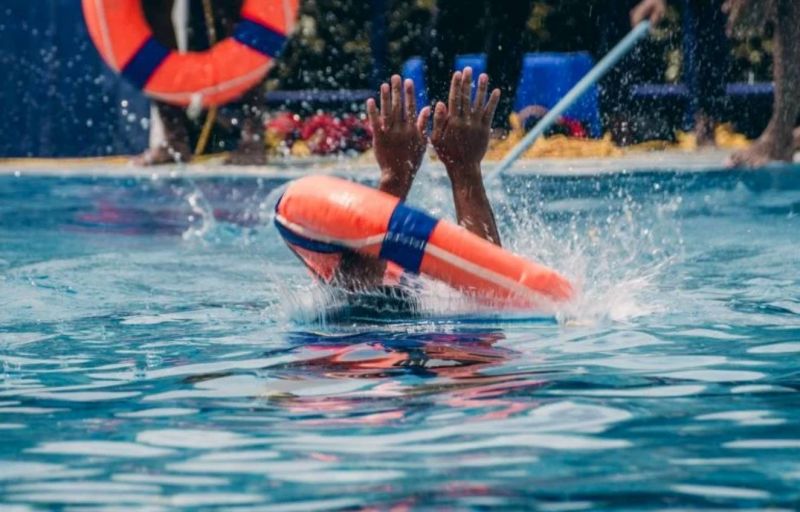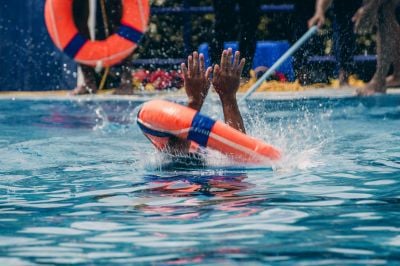
(Credit: Bigstock)
“Drowning cases are higher in 2023 than in previous years,” said Samir Yazbek, head of the Civil Defense's marine rescue unit.
“There were fewer drownings in the previous three years because people were confined to their homes due to the pandemic,” he explained. “This summer, they are returning to the beach and cases are on the increase.”
According to Yazbek, the majority of victims are between the age of 18 and 30 and do not follow safety rules, including swimming in rough seas or during high tides.
These incidents are mainly concentrated on the beaches of Saida and Sour in southern Lebanon, as well as Ramlet al-Baida in Beirut, and Jbeil in northern Lebanon, according to the Civil Defense.
A high-ranking Internal Security Forces officer confirmed this observation. The source however indicated that there is no precise data on drowning cases in Lebanon.
“Many cases are due to non-compliance with established rules. This particularly concerns people who choose to swim despite warnings about strong currents and swimming bans, as well as those who swim in agricultural irrigation ponds,” Yazbek said.
What can be done to prevent swimming from turning into tragedy?
- Swimming, panic and water conditions
“In order for people to protect themselves from drowning, they need to know how to swim first before venturing into the sea or the deep end of a swimming pool,” said Professor Manal Nader, director of the Institute of the Environment at Balamand University who is also a professional diver.
Inexperienced swimmers also need to have basic safety equipment, like armbands or a life jacket.
“It is key to know where it is safe to swim and not to venture into dangerous areas where conditions can be difficult,” added Nader.
The director of the Lebanese Association for Sports Injury Prevention (LASIP), Ziad Halabi, said, “Beaches without lifeguards, where access is often free of charge, and those rocky beaches,” are high-risk areas. “The waves hit the rocks and it can be particularly difficult to get out of the water without slipping on the mud.It is also important to not panic, which can considerably increase the risk of drowning,” especially among children.”
If the swimmer is carried away by the current, whether at sea or a river, “it is recommended not to fight against the force of the water, but rather to swim with the current to prevent exhaustion and the risk of drowning.”
- Parents: first responsible for children’s safety
The parents are primarily responsible for children’s safety in the water. According to Halabi, “although beach resorts and lifeguards have their share of responsibility, it is now vital for parents to understand that they cannot rely solely on lifeguards and leave their children alone in the water, whether at sea or in a pool,” he said.
He explained that, as the law in Lebanon does not specify how many lifeguards must be present at poolside, many beach resorts are understaffed in terms of lifeguards.
He added, “It is scientifically proven that a child can drown in less than one minute, without making any noise, unlike an adult who takes around three minutes and makes a lot of noise when drowning. This has to do with the psychology of the child, who remains silent and motionless, paralyzed by panic, even if they have their foot in the water.”
- The risks of apnoea
Halabi also warned against a “dangerous game for children,” who want to keep their heads underwater for as long as possible. “If parents allow their children to play this game, they must ensure that they do not hyperventilate before going down into the water (inhale deeply several times before holding their breath and diving). This reduces the level of CO2 in the blood but does not increase oxygen levels. When children are in water with low CO2 levels, their bodies do not understand that they need to breathe and will not give them the command to do so. There is then a risk of the child fainting, with their head under water,” added Halabi.
- The dangers of rivers
Halabi also warned against the risks of swimming in rivers, where the water is less salty and strong currents can sweep swimmers away.
Nader recommended “not to swim in rivers when the snow is melting. In addition to the strong currents at these times of year, the water is often very cold, which reduces the metabolism and causes vasoconstriction of the blood vessels, making swimming more difficult.”
Halabi pointed to the risks of rafting in Lebanese rivers, especially in the absence of legal regulations. “All the companies offering this service in Lebanon are private and not subject to any regulation,” he said, adding that it is therefore important to ensure that the club chosen has “hired qualified trainers.”
- Irrigation ponds
The two experts, along with the Civil Defense and ISF, point to the dangers of swimming in agricultural irrigation ponds. “These ponds are large holes lined with nylon. Over time, algae forms and makes the surfaces very slippery. Their semi-spherical shape means there’s nowhere to grab on to,” warned Halabi.
- Dry drowning
Halabi draws attention to the dangers of “dry drowning.” This is a type of drowning that occurs when water enters the respiratory tract after a bather has drowned and been rescued. In this case, “the water can cause the airways to spasm, leading to air obstruction and a reduction in breathing capacity,” he said.
“Anyone rescued from drowning should be taken immediately to emergency to be examined by a doctor, who can assess the damage caused by the water and thus avoid death by dry drowning,” he said.
This article was originally published in French in L'Orient-Le Jour. Translation by Joelle El Khoury.

